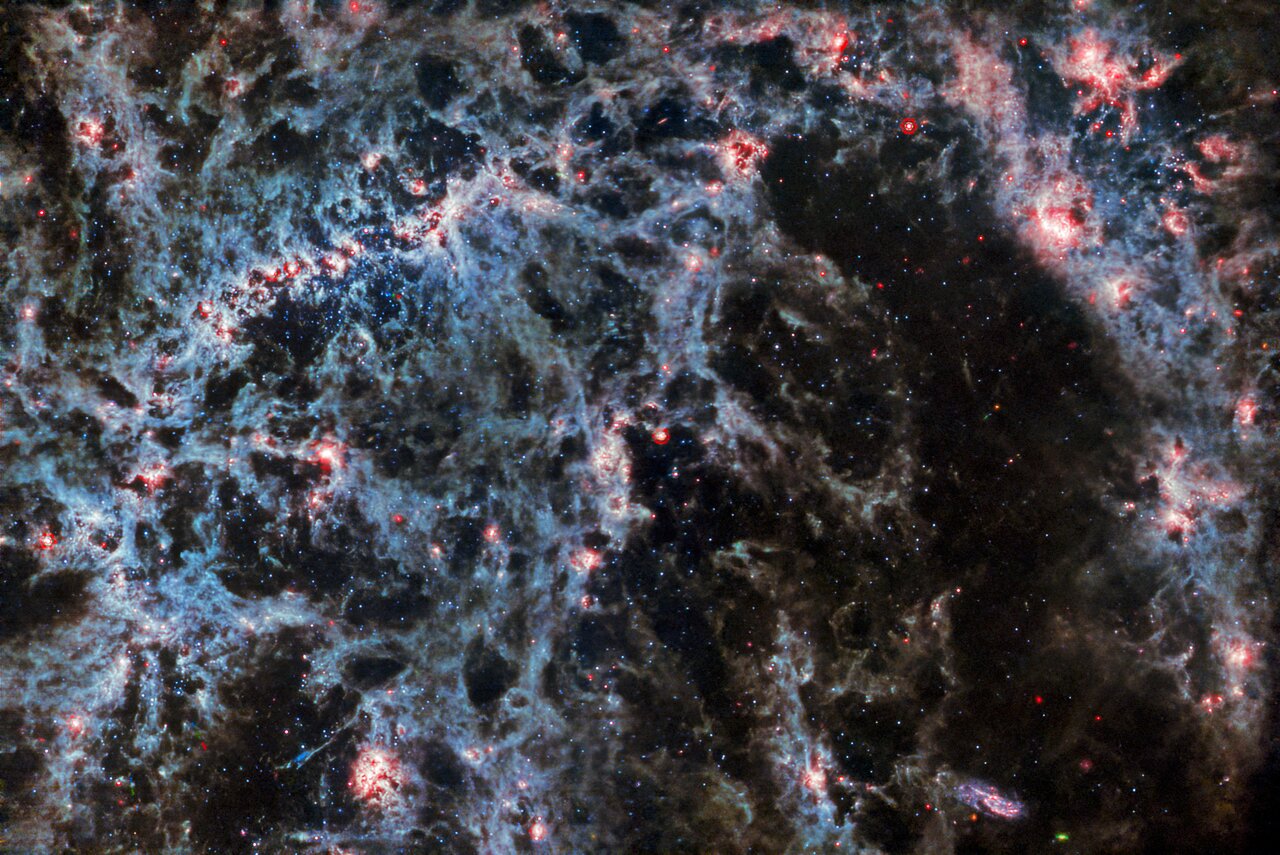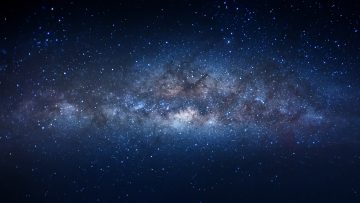James Webb has captured a beautiful snapshot of star birth in the Virgo constellation. The latest image from the powerful observatory takes a closer look at the barred spiral galaxy NGC 5068. These types of galaxies are known for the bright central bar that runs across them, which you’ll be able to spot in the upper left-hand corner of the new image.
The galaxy itself is located in the Virgo constellation, roughly 20 million light-years from Earth. What makes this image so intriguing and peculiar, though, is that Webb’s various sensors allow astronomers to dig deeper than the surface level light and gas we’d normally see in a photo of a galaxy far, far away.
Instead, Webb is capable of looking much deeper to give us a front-row seat to star birth in the galaxy, where glowing gas bubbles showcase the first evidence of newborn stars. But this image itself isn’t just one single breakthrough. Instead, NASA says that it is part of a much wider attempt to collect images of star formation.

The space agency hopes to collect as many images as it can, giving astronomers plenty of data to work with and learn from. Altogether, Webb captured three different images of the star births in the Virgo constellation. The first image is a composite from the MIRI and NIRCam instruments on the telescope. Additionally, NASA shared the NIRCam and MIRI images, too, to give deeper insights into the galaxy.
NASA showcased all of the images in its announcement detailing the various observations made by the Webb space team when the images were captured. As with most Webb photos, they give us a much deeper look into the universe than we’d be able to accomplish without Webb, which is why the telescope is such a fantastic addition to the ESA and NASA’s ongoing scientific efforts.
On top of capturing photos of star birth, Webb has also turned a lot of our own theories on the universe’s expansion, and even galactic evolution, on their heads.








